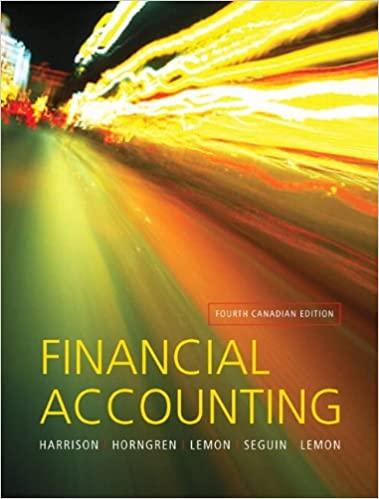Question
Reginald Bank offered its Chief Investment Officer (CIO) 5,000 options to purchase company stock at $5/share on January 1, YEAR 1. The stock was selling
Reginald Bank offered its Chief Investment Officer (CIO) 5,000 options to purchase company stock at $5/share on January 1, YEAR 1. The stock was selling at the same price in the public market that day. Assume that Reginald Bank estimates the value of the options on the grant date is $10/share. The vesting period was 50 percent for YEAR 1 and 50 percent for YEAR 2. On December 31, YEAR 2, the stock was worth $7/share, but the CIO believed that stock prices were going up; so she waited until December 31, YEAR 3 to exercise all her options and turn around and sell the shares the same day when the stock price was $15/share. A) If YEAR 1 is 2000, YEAR 2 is 2001, and YEAR 3 is 2002 and the above options are non-qualified stock options (NQOs), the amount of expense Reginald Bank will recognize in its income statement for financial reporting in 2000 is $_______.
B)If YEAR 1 is 2000, YEAR 2 is 2001, and YEAR 3 is 2002 and the above options are non-qualified stock options (NQOs), the amount of expense Reginald Bank will recognize in its income statement for financial reporting in 2001 is $_______.
C)If YEAR 1 is 2000, YEAR 2 is 2001, and YEAR 3 is 2002 and the above options are non-qualified stock options (NQOs), the amount of expense Reginald Bank will recognize in its income statement for financial reporting in 2002 is $_______.
D)If YEAR 1 is 2000, YEAR 2 is 2001, and YEAR 3 is 2002 and the above options are non-qualified stock options (NQOs), the amount of deduction for Reginald Bank related to the stock options in 2000 is $_______.
E)If YEAR 1 is 2000, YEAR 2 is 2001, and YEAR 3 is 2002 and the above options are non-qualified stock options (NQOs), the amount of deduction for Reginald Bank related to the stock options in 2001 is $_______.
F)If YEAR 1 is 2000, YEAR 2 is 2001, and YEAR 3 is 2002 and the above options are non-qualified stock options (NQOs), the amount of deduction for Reginald Bank related to the stock options in 2002 is $_______.
G)If YEAR 1 is 2000, YEAR 2 is 2001, and YEAR 3 is 2002 and the above options are non-qualified stock options (NQOs), the amount of book-tax differences related to stock options Reginald Bank will have in 2000 is $_______.
H)If YEAR 1 is 2000, YEAR 2 is 2001, and YEAR 3 is 2002 and the above options are non-qualified stock options (NQOs), the amount of book-tax differences related to stock options Reginald Bank will have in 2001 is $_______.
I)If YEAR 1 is 2000, YEAR 2 is 2001, and YEAR 3 is 2002 and the above options are non-qualified stock options (NQOs), the amount of book-tax differences related to stock options Reginald Bank will have in 2002 is $_______.
Step by Step Solution
There are 3 Steps involved in it
Step: 1

Get Instant Access to Expert-Tailored Solutions
See step-by-step solutions with expert insights and AI powered tools for academic success
Step: 2

Step: 3

Ace Your Homework with AI
Get the answers you need in no time with our AI-driven, step-by-step assistance
Get Started


